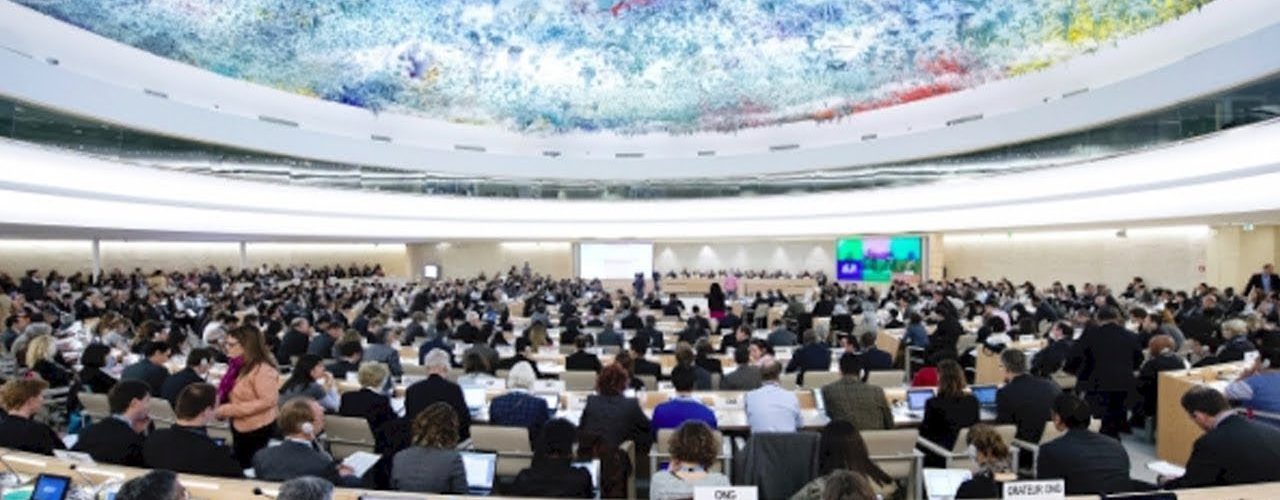No major democratic country deals with domestic civil or criminal matters related to human rights based on a voluntary system, explains Harris Gleckman, in an op-ed on the disproportionate power wielded by transnational businesses in the current world system
December 26, 2018 Produced by Lynn Fries
***
A transcript is not available at this time. The OPED this newsdoc is based on was published November 14, 2018 at openDemocracy and is shared below.
COUNTERBALANCING DISPROPORTIONATE POWER: A RESPONSE TO JOHN RUGGIE by Harris Gleckman.
When human rights gained recognition the dominant power was the state relative to the individual and citizen. Now transnational businesses have vastly greater power than both.
Earlier this autumn, Professor John Ruggie, author of the UN Guiding Principles on TNCs and Human Rights (UNGP), shared his comments on the Zero Draft treaty on transnational corporations and human rights on the Business and Human Rights Resource Centre blog (1). His core concerns are that the zero draft has not adequately dealt with ‘scale’ and ‘liability’. I think Ruggie’s arguments in opposition to the binding treaty are misdirected and that they fail to recognize the historic opportunity offered by the Human Rights Council to create a human rights remedy system for corporate abuse across national boundaries.
The issues Ruggie raised in opposition to a binding treaty seemed to have influenced the delegations from Europe. On the final day of the fourth session (19 Oct 2018), the EC announced that they and their member countries were leaving the chamber as they could not agree with the Chairperson’s recommendations to continue negotiating a new international instrument on TNCs and human rights. But before I address Ruggie’s two major concerns with a binding agreement, I’d like to make three preliminary observations.
A well drafted remedy system in a binding treaty
First, the third UNGP pillar is the need for ‘access to remedy’. No major democratic country deals with domestic civil or criminal matters related to human rights based fundamentally on a voluntary system. Given this legal history alone, it makes good sense to have a clear set of binding rules and procedures for a more complex cross-border remedy system. It is also clear from the facts on the ground that there is not now a working global remedy system for those whose human rights have been violated by business with a transnational character. It is also clear from the political decision of the Human Rights Council to create the working group that a significant number of Governments share this view.
This should not be surprising. If a business can use jurisdictional boundaries to avoid providing documents that may provide evidence of corporate human rights violations, then that business will certainly do so. If a witness can avoid providing evidence that the international partner instructed the local firm to take an action that resulted in a human right violation, then that witness may be quite happy to stay out of a court case. If a court ruled against an international business in either a civil or criminal case, would that international business voluntarily pay a fine of millions of dollars or accept that its executives are financially or criminally sanctioned?
A voluntary-based remedy system cannot reasonably result in a meaningful remedy system, particularly if the issues are contested between the parties and the potential financial costs are significant. Consequently a well drafted remedy system in a binding treaty could well be the only way the third pillar of the UNGP could be meaningfully implemented.
The second preliminary observation relates to the legal rationale for a new legally binding agreement. I agree with Ruggie that “no international economic system like this has ever existed” and that the zero draft approach for a convention cannot be done ‘without standing international law on its head’. I also agree that certain legal elements like extraterritorial obligations (ETO’s) and universal jurisdiction are ‘unlikely to be met with uniform acclaim ‘. However, unlike Ruggie, I don’t see these as arguments for not proceeding. Rather I see these candid assessments as a good reason to proceed. Getting any meaningful remedy system for human right violations involving business activities with a transnational character will require new legal concepts. Many of the old guard and supporters of the current lack of cross border legal accountability will object. It is a challenge that must be faced. It would be surprising if proponents of the current non-remedy system did not use legalisms against a potential new regime. It is also not surprising that a host of traditional rules of law will be raised against any proposal that might result in a legally clear statement on corporate responsibility, obligations, and liabilities.
Providing information and ensuring implementation
The third preliminary observation is, as Ruggie argues, that (a) prevention and (b) the provision of mutual assistance and cooperation between States are crucial. I share with Ruggie that all sources of prior work need to be drawn on to provide clarity on what is to be done to prevent human rights abuses by businesses with a transnational character. The zero draft however misses a major opportunity in its specifications for how a relevant business entity can organize its operation to prevent human rights abuses. The draft wisely elevates human rights due diligence; but it should also establish the ground rules for mandatory public comments on the due diligence report from those most likely to be affected; and a judicially based process to reconcile the corporate-drafted due diligence statement and the views of the affected public.
An internally prepared due diligence study is only one-third of the process for an effective prevention system. As with the prevention requirements, the zero draft and its associated draft protocol misses the opportunity to provide a far higher degree of clarity about potential mechanics of mutual assistance and cooperation. The draft provision are also only one-third of the story. The zero draft and the protocol establish an institutional structure to ask for information from authorities in other countries but omits the requirement that the receiving country act within the terms of its legal structure to provide the requested information and then to ensure the implementation of any final court judgement. No doubt there is a lot of good legal work necessary to define the appropriate way for one legal system to ‘talk’ effectively with another legal system. The treaty can lay the basis for this work.
The scope of the binding treaty
Ruggie’s concerns with the scope of the zero draft involve (a) the coverage of national enterprises and state-owned enterprises (SOEs), (b) the scope of human rights covered, and (c) the introduction of the concept of ‘business activities of a transnational character’.
With regard to (a), Governments already have the domestic legal capacity to deal with businesses that violate human rights within their jurisdictions. The need for a treaty therefore involves only those business activities that in a significant fashion cross jurisdictions and result in adverse human rights violations.
When SOE’s business activities involve significant transboundary activities, whether as the international partner or the domestic partner of a transnational corporation, they could be treated in the binding convention as ‘other enterprise’.
With regard to (b) I share with Ruggie that the zero draft is very vague about the scope of human rights covered. The draft both says that it is intended to include all human rights but operationally it presumes that the relevant human rights are those enforced in individual countries. Having 193 different sets of applicable human right standards affecting businesses with a transnational character is confusing and difficult to operationalize, even for a firm that aspires to act in a manner consistent with international human rights standards.
This is a problem for both the UNGP and the zero draft. The best way to address the multiplicity of human rights standards is for the binding treaty to explicitly define those human rights standards that apply to businesses with a transnational character. A first listing of direct obligations in a treaty would clarify that these enterprises do, say, have expected standards for treating their workers but do not have expected human right standards to provide, say, health care or a sound education.
With regard to the core definition in (c), the text should have a clear definition of ‘businesses with a transnational character and executives of these businesses’. Elements of this definition are in footnote 2.
Scale of the binding treaty
Ruggie’s concerns withscale involve that (a) the zero draft does not grapple with ‘the magnitude of the task at hand seeking to regulate transnational business enterprises or ‘activities’; (b) the lack of legal precedent for a remedy system; (c) ‘entrenched national law doctrines that limit the piercing the corporate veil’, (d) the ‘inextricable relationship between due diligence and the attribution of liability’ and (e) the inadequacy of the proposed institutional machinery.
With regard to the size of the challenge in (a), Ruggie’s argument is fundamentally a defeatist statement. If he believes that the potential number of TNCs which engage in cross border human rights is so large, he seems to want that the world should just accept that the problem is incurable and not worth the effort to fix. With regard to the existing view about difficulties of ascribing liabilities to parent enterprises (c), the world’s investor community and stock exchange have figured out how to ascribe income and assets from affiliated businesses to the parent firm and the tax authorities in a number of OECD countries have likewise developed acceptable way to sum up income and assets from a diverse range of financially and contractually associated entities.
If the parent firm and its investors and shareholders were not trying to hide assets from victims of human right abuses, it should be possible to use a similar approach to aggregate legal liabilities based on the practices in use for assets and income. I share with Ruggie that (c), (d), and (e) are problems in the text. The solution for (c) and (d), as suggested above, is to establish clear statements of direct global corporate transboundary human rights standards in the body of the text and a process to elaborate over time additional standards in annexes using the authority of the COP. With regard to the advisory role of experts as the core machinery to oversee the agreement (d), it would be far better to have a more traditional conference of parties, relevant expert advisory bodies and secretariat support structure. Details for such an approach are footnote 3.
To be clear, my underlying difference with Ruggie and other supporters of the UNGP who disparage the complementary nature of a binding treaty is that times have changed. When human rights gained recognition the dominant power was that of the state relative to the individual and citizen. Over time the approach has shifted to include that the state should have a positive obligation to use it power to protect the human right of individuals, citizens, and communities. What has now changed is that businesses with a transnational character have vastly greater power than states and individuals. And therefore it is wise to combine the power and authority of states, individuals, and community associations to establish clear and effective standards, rules and procedures to counterbalance those which have disproportionate power today.
Notes
(1) He subsequently conveyed similar views to all Geneva missions working on the draft binding treaty.
(2) Elements of this definition include (a) there are significant international commercial linkages between relevant businesses (and therefore the agreement does not need to address fundamentally domestic enterprises), and (b) the nature of explicit or implicit actions/instructions/requirements by the international business firm and its executives to other firms that create a causal chain of liability. Relevant executives are those that issued or implemented the action/instruction/requirement that caused a violation of human rights.
(3) The arrangement should at a minimum empower the Conference of Parties (COP) (a) to continue to evolve the human right legal commitments for businesses with a transnational character, (b) to address issues raised by repeat corporate violators or repeat business practices in a sector, (c) to be able to sanction non-conforming countries, (d) to have supervisory oversight of the Fund to support victims and incentivize countries, and (e) to manage the secretariat staff . An expert committee can advise the COP on any of these issues and prepare potential decisions for the COP. The secretariat can be asked (a) to identify issues that should be considered by the COP to advance the goals of the Convention, (b) to maintain a public registry of national implementation actions, a public registry of cases that are using the mutual cooperation provisions, and a public registry of reports from CSOs, the media, and other sources about unresolved human rights cases involving businesses with a transnational character; and (c) to assist signatory countries in their implementation of the treaty.
END
Harris Gleckman is Senior Fellow at the Center for Governance and Sustainability, UMass-Boston and Director of Benchmark Environmental Consulting. Dr Gleckman’s latest study: Multistakeholder Governance and Democracy: A Global Challenge was published by Routledge on Oct 5, 2018. He is the former Chief of the NY Office of UNCTAD, Senior Officer for the first Financing for Development Conference, and Chief of the Environmental Unit of the Centre on Transnational Corporations. Over a period of 30 years, he undertook policy oriented research on multinational corporations, global environmental management, financing for development, global governance institutions, and the economics of climate change. He is currently working on a handbook on the governance of multistakeholderism.
Originally published at TRNN



